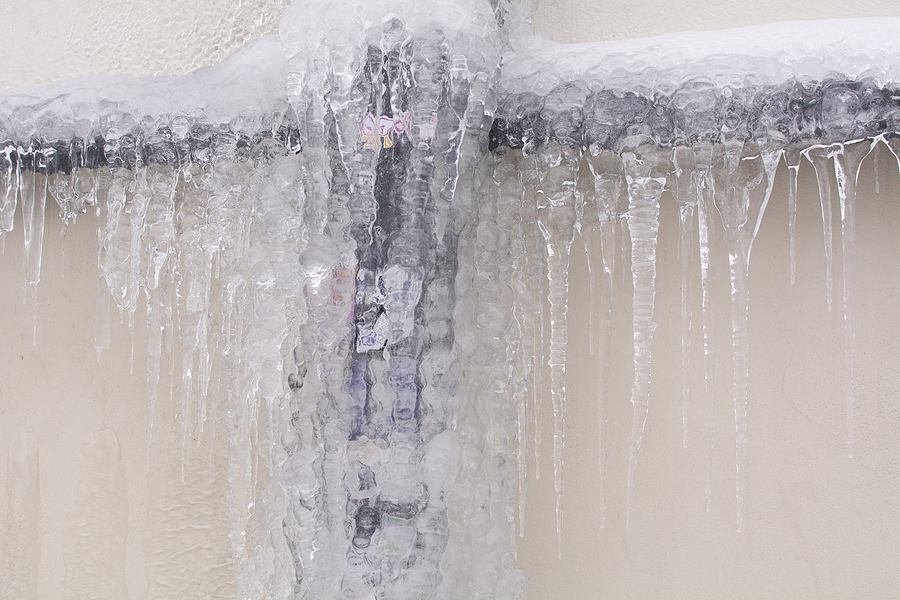Call This Monday to Get $50 OFF
Call us Now to Get $50 OFF.
Ratings based on 6379 reviews
Local Plumbers, Local Reviews
Call This Monday to Get $50 OFF
Call us Now to Get $50 OFF.
Ratings based on 6379 reviews
Local Plumbers, Local Reviews

When winter arrives, it brings with it more than just snow and chilly weather. One of the most common cold-weather problems is frozen pipes. At Mr. Rooter Plumbing, we know how critical it is to act quickly and responsibly when your pipes freeze. Keep reading to learn practical steps to thaw frozen pipes safely, to know when it’s time to seek professional plumbing services and find out how to prevent frozen pipes from happening in the future.
When you suspect a pipe has frozen, your immediate goal is to reduce pressure in the system. The quickest way to do that is by turning on all the faucets connected to the frozen pipe. This step is important because as water freezes, it expands and puts immense pressure on the pipe, which increases the risk of a burst. Allowing faucets to stay open lets the pressure escape as the ice melts. Even if no water initially comes out, keep those faucets open. As you work on thawing the pipe, the water will begin to flow again and show that the blockage is starting to clear. During winter, leaving faucets slightly open, especially in areas prone to freezing, can help keep water moving and prevent freezing altogether.
After opening the faucets, the next step is to thaw the frozen pipe. However, this isn’t something you want to rush into without taking the right precautions. Using an open flame or excessive heat can damage your pipes or create a fire hazard. Instead, stick to tried-and-true methods that are effective and safe:
Always work methodically and take your time. Thawing a frozen pipe too quickly can weaken it, and cause leaks or the need for repiping later. Patience is needed to make sure the pipe thaws evenly and without damage.
What happens when your best efforts to thaw a pipe don’t work? Or worse, what if the pipe bursts despite your attempts to prevent it? Burst pipes can cause water damage, mold growth, and severe structural issues in your home if not taken care of immediately. A qualified plumber can identify the problem, determine the extent of the damage, and recommend the best course of action. Depending on the situation, they may suggest repairs, repiping, or preventative solutions to protect your plumbing system from future freezes. If you’ve dealt with frozen pipes repeatedly in the past, consider asking a plumber to inspect your system and recommend upgrades. Simple measures like insulating pipes or rerouting vulnerable sections can save you from the hassle and cost of dealing with frozen pipes year after year.
The best way to deal with frozen pipes is to stop them from happening in the first place. Prevention protects your plumbing and saves you from expensive emergency calls and potential water damage. Here are some practical steps to keep your pipes safe during winter:
If you’re dealing with a frozen pipe emergency or want to prevent trouble, call Mr. Rooter Plumbing today. We provide reliable plumbing services for homeowners dealing with cold-weather challenges. Whether it’s a minor pipe repair, complete repiping, or simply helping you thaw a frozen pipe, our team is equipped to handle it all. Contact us to schedule your appointment.
As a society, the delivery of clean water through various systems is one of the…
Read MoreAre you worried that the constant trickle of water in your toilet is the cause…
Read MorePlumbing problems are the one incident every homeowner dreads due to their expensive repairs and…
Read MoreWater heaters are vital appliances that keep households and commercial establishments running efficiently. Whether it is showering, drinking,…
Read MoreWhen it comes to leaks, not all of them are visible to the naked eye. Sometimes, the pipes…
Read More